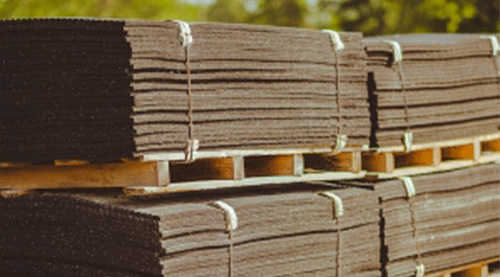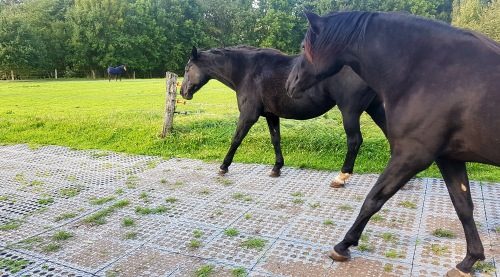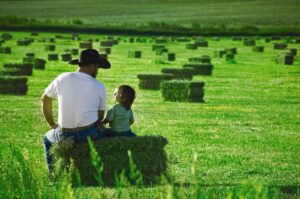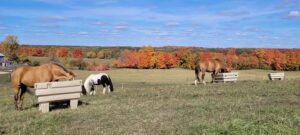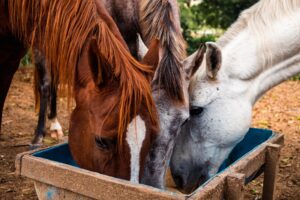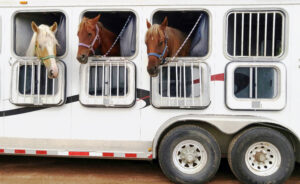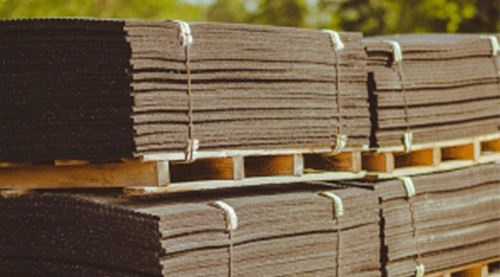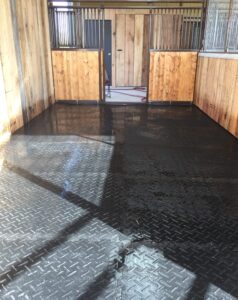
Lighting The Way
Horsemens Corral July 2020 – Lisa Kiley
While the days are getting longer, it is a great time to appreciate the extra light that we can take advantage of for riding and other barn activities. It is also a great time to take stock of lighting in the barn, arena and security lighting. Evaluating lighting needs and taking steps to make your facility safer and brighter will benefit you and your horses and can even add up to significant cost savings throughout the year.
LED Lighting
The single most innovative technology in lighting is the use of LED (Light-emitting diode) lighting versus conventional incandescent lighting. LED lighting is much safer than conventional lighting because it runs so much cooler, decreasing the risk of a fire hazard from the heat of a lighting source. Because LED lighting is 80% more efficient than traditional lighting, it will also translate to savings on electric expenses. LED lighting lasts significantly longer than other forms of lighting, resulting less turn over and product replacement. Because the lights are more environmentally friendly, there are some rebate programs that may be available to help facilitate the upgrade of your farm to LED lighting that can be found through your energy provider.
Arena Lighting
When riding in an arena, shadows can create a spooky space for your horse, so there are a few things to consider when mapping out a lighting project. The number of foot candles required for safe riding will largely depend on the types of events that are occurring in the arena. Professional settings and arenas may need up to 70 foot candles. Standard training facilities require as little as 25-30 foot candles, while disciplines that involve obstacles, such as jumps, do best with around 40 foot candles because the objects can cast shadows.
For outdoor arenas, the lighting is typically on the perimeter, this means that setting the poles around the arena as high as possible will provide the best lighting. Poles that are 20 foot high may be adequate, 30 foot poles are preferable. For indoor arenas, there are typically more restrictions with height of the lamps. To adjust for this, add more lighting. Additional lights will allow the casting of the light to overlap, softening harsh lines that can cause shadows.
Interior Barn Lighting
When it comes to lighting inside the barn, it is important to note that utilizing natural lighting as much as possible creates a healthier environment. Horses, like humans, need Vitamin D which we source through the sunlight and in turn allows the absorption of minerals like calcium and phosphorus. Proper interior lighting becomes essential for barns when natural light isn’t available.
Great lighting in the interior of the barn is going to make day to day activities much safer for both you and your horse. Some of the areas to concentrate on include: aisle ways, grooming areas, feed rooms, and stalls. While it may make grooming and clipping much easier, it will also allow for proper examination of tack and equipment, feed and medications and let you properly assess your horse in the case of injury.
Lights can also alter circadian rhythm for a horse tricking their system into believing it is summer year round. In order for this to work, lights should be placed on a timer to extend natural daylight, so that the horse is exposed to light around 16 hours throughout the day. Extension of lighting will both keep hair coats short for horses that show year round and keep mares cycling though the year to allow for earlier breeding. Stalls should be lit in such a way that it is easy to read a newspaper in the darkest corner. Horses who are kept under lights and do not develop a full coat should be blanketed as needed.
Exterior Barn/Safety Lighting
Exterior barn lighting improves the safety and security of your barn. Anyone who has horses at home understands that no matter what season or time of day, there are reasons you will need to be in the barn after dark. In these cases, it is helpful to have lighting on the exterior of the barn that lights the way for entry points. Motion lights can help save energy and will alert you if someone or something is out in the barn area. Although lighting in and of itself will not guarantee security, it can be an important part of a more comprehensive security plan. It can help deter nocturnal animals from entering the barn including raccoons, opossums and even coyotes. When walking between the pastures and the barns, well planned lighting can make it safer to lead horses in or out in the darkness.
Lighting is an important aspect to any well planned equine facility. By simply adding light, it leads to a safer and healthier environment for horses and humans. The addition of LED lights adds an extra layer of safety and energy savings while contributing to a healthier environment.
Lighting Terminology
There are a few lighting terms to become familiar with before starting a lighting project:
Lumen – Lumens are a measurement of light output and perceived brightness in a space.
Foot Candle Measurement – A foot candle is one lumen per square foot.
Photometrics – Photometrics are layouts of LED lighting plans that allow you to check out how specific lighting will work in your facility.





